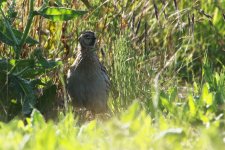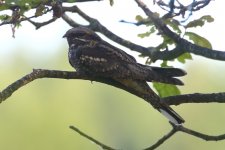Sharp Shin
Stewart Belfield
This is the time of year for trying to see two scarce birds that are usually well-hidden: Nightjar and Quail. Both birds are usually located by their ‘song’, but the chances of seeing them is usually in flight. Recent experience has led me to a tentative hypothesis which may (or may not) be helpful. For Nightjar, their ‘churring’ is often linked to their ‘clapping’ display flight. So, the chances of seeing a Nightjar take flight are best directly after it stops ‘singing’. For Quail, their three-part ‘song’ is not linked to any display flight. During and after males having expanded the energy in a repeated ‘wet-my-lips’ song for a period, they are likely (I suppose) to stay in the same spot for a while to see if there is any female response. Hence, these birds are not likely to take flight after stopping singing. Your best bet of seeing Quail break flight is probably when they have been quiet for a while. Well, that was my experience in Suffolk today.
Stewart
Stewart
Last edited:








